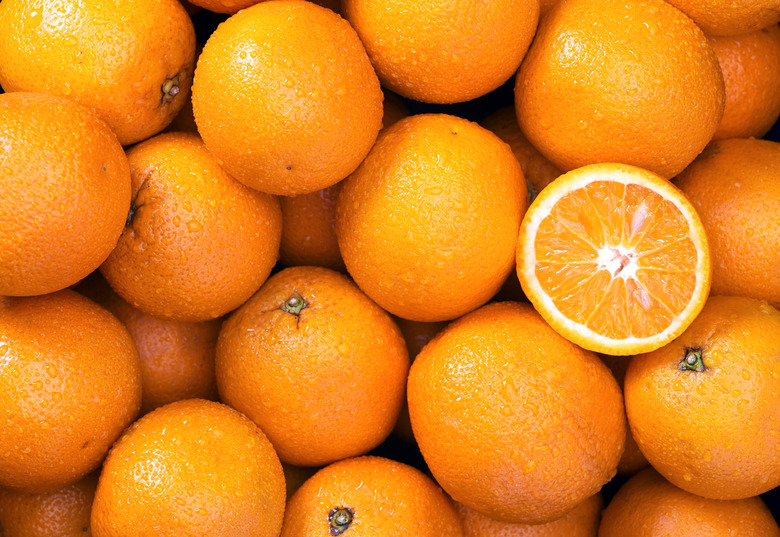How To Ripen Oranges
Once oranges are harvested, they don't ripen anymore, which makes selecting the right ones – whether you're plucking them from the store shelf or the tree itself – crucial. Selecting oranges that are, well, orange might seem like the obvious starting point. But many oranges turn from green to orange before they have ripened, and some ripe oranges have green patches. Thankfully, there are some tricks for determining whether your oranges are ready to be eaten.
Mature or Ripe?
An orange is mature once it has completed its growth cycle, while ripening happens afterward. When ripening, the fruit begins to convert starch into sugars. The acid content lowers and the fruit changes color, meaning you need to pick it at just the right time – when it's soft and sweet enough but hasn't become overripe or decayed.
- Once oranges are harvested, they don't ripen anymore, which makes selecting the right ones – whether you're plucking them from the store shelf or the tree itself – crucial.
- The acid content lowers and the fruit changes color, meaning you need to pick it at just the right time – when it's soft and sweet enough but hasn't become overripe or decayed.
Know When It’s Ready
Each variety has a different harvesting time. Navel oranges are usually ready any time between November and June, while clementines and satsumas can ripen from October to January. Often fruit will fall from the tree once it's ripe, but you'll need to check for mold and blemishes. Usually a ripe orange will release easily from its stem when it's ready to harvest. The best thing is to pick a single test orange and give it a taste. If it's too sour, wait a week or so before plucking another from the tree.
Select the Best
Weight is a reliable indicator of ripeness. Select the oranges that are heaviest for their size and firm to the touch with just a little give. It can be trickier to judge based on color, which varies widely depending on the type of orange. An orange with a little green on it might be perfectly ripe. The patches often develop late in the season, when the tree has started to blossom again before fruit has been plucked from its branches.
- Each variety has a different harvesting time.
- Often fruit will fall from the tree once it's ripe, but you'll need to check for mold and blemishes.
Sweeten the Deal
If you have an orange tree and the fruit seems too sour, make sure the soil has plenty of drainage. Add a layer of compost to the topsoil, but keep it away from the trunk. Use an organic, slow-release fertilizer with trace minerals to ensure the tree is well-fed. Keeping the canopy open by pruning regularly will increase the amount of sunlight hitting the fruit through the leaves, which should help produce sweet, juicy oranges.
From Sour to Sweet
If you are stuck with a bowlful of not-quite-sweet oranges, don't chuck them away. Shaking the orange in a container agitates the fruit, which produces juice that dilutes and reduces the sour taste. An obvious solution is to add sugar, either by stirring through freshly squeezed juice or sprinkling over segments. You can also use them in marmalade and cakes, where the sourness is often prized.
- If you have an orange tree and the fruit seems too sour, make sure the soil has plenty of drainage.
- You can also use them in marmalade and cakes, where the sourness is often prized.
